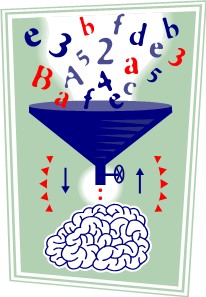Andy Paul and I exchanged emails on my post The Heisenberg Uncertainty Principle And Selling. He had written a similar post [See Here]
His post reminded me of something too many sales people overlook in their sales strategies. Buyers Get Smarter Through The Buying Cycle.
If we are doing our job engaging with the customer, we are teaching them–helping them understand new approaches to achieving their goals and getting them all hot and lathered to change. They engage in assessing the opportunity, determining their needs/requirements, evaluating alternatives.. Through this process, they engage more people in their organization. Their points of view shift as they align priorities and goals with their peers. As we work with them, they learn more–about what others are doing, about possibilities of what they might do. They do their own research, further learning, further adjusting their goals, objectives, needs, and requirements. They engage our competition, who, like us, is teaching and trying to create their own value and differentiation.
Through this entire process, the customer is learning and getting smarter.
But it creates a real challenge for us as sales people. We’re taught about a process that’s relatively static: Qualify the customer; establish their needs, requirements, priorities; understand their decision-making process; present a differentiated solution that offers superior value; close. We tend to think of these as static moments, executing one, then moving to the next. Our sales processes are built around the flow from one set of static events to the next.
But the buying process is very dynamic. As the customer progresses, they get smarter. In that process, what they thought they may have been trying to do changes. The definition of the problem they were trying to solve may shift, it may get deeper and richer. The requirements they had to address that problem will change–both as they learn more about the problem and potential solutions. As their definition of the problem changes, their needs change. This may impact the solution we propose, it certainly impacts how we engage them, and what we must do to continue to create and build value.
If we aren’t attentive to this process, we create a distance between us and the customer. The gap continues to widen as we focus on where they were in their buying process, not where they are and where they are going. We could be responding to the wrong things–that is, what they wanted not what they want or will want.
The “static” thinking we use in our sales processes hurts us in this dynamic environment, we have the tendency of working with the customer based on where they were in first determining their needs and priorities, not based on where they are now that they know so much more. So we have to keep adjusting, reconfirming needs, priorities, what they want to achieve. As they get smarter, we get smarter by adjusting our strategies to respond, guide and lead them on to a decision.
If we’re really good, creating the value we should and facilitating their buying process, we are right beside them as they make their buying journey. Perhaps we are influencing it, but in the least we are totally aligned with where they are and where they are going. We are creating value they value and responding to their real needs and requirements, not what they used to be.
Buyers get smarter through their buying cycle. Are you getting smarter with them?
By the way, be sure to buy Andy’s latest book, AMP Up Your Sales.

David,
Really insightful post. Thanks! For me, this really highlights the need to emphasize with clients that, although we map the buying process (visually) as a logical sequence, we must be attuned to shifts and adjust accordingly. I think this is particularly important to recognize in complex deals with multiple stakeholders (the norm these days). A bit of “herding cats” may be required.